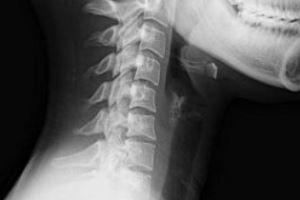Think Twice about Back Surgery

Back pain is incredibly common—in fact, just about every adult in the United States has experienced back pain in some form or another, and it is one of the top complaints heard in doctors’ offices and hospitals around the country. Yet the cause of any one type of back pain is one of the most difficult things to diagnose. There are many treatments for back pain, such as chiropractic, physical therapy, acupuncture, surgery, saline injections, and steroid injections, all with varying degrees of risk. According to experts, you should treat back pain conservatively—that is, you should opt for the least risky, minimally invasive treatment option first before considering treatments such as spinal surgery.
Of course, there is risk with any surgery, but failed back surgeries can be calamitous—so much so that there is a condition called “failed back surgery syndrome,” also commonly referred to as failed back syndrome. According to the University Hospital of Columbia and Cornell, New York-Presbyterian Hospital, “Failed back syndrome is a general term that refers to chronic severe pain experienced after unsuccessful surgery for back pain. Surgery for back pain is conducted when there is an identifiable source of pain—usually to decompress a pinched nerve root or to stabilize a painful joint. However, back pain can have a number of causes and accurate identification of a source of pain is complicated; often symptoms do not correlate well with x-rays or magnetic resonance imaging scans. As a result, diagnosis and patient selection for surgery are essential.”
Failed back syndrome has a large array of causes. For example, the original source of the pain can return or complications may arise during surgery. The nerve root triggering the pain may be ineffectively decompressed, joints or nerves may become irritated during the surgical procedure, or scar tissue may compress or bind nerve roots. Additionally, nerve damage sustained during the surgery can add to already existing pain. In some cases, nerves may rejuvenate to a degree, but even this can result in pain if the regeneration is abnormal.
Numerous factors can add to the onset or advancement of failed back syndrome. Contributing causes include residual or recurrent disc herniation, persistent post-operative pressure on a spinal nerve, altered joint mobility, joint hypermobility with instability, scar tissue (fibrosis), depression, anxiety, sleeplessness, and spinal muscular deconditioning. Insufficient or unfinished rehabilitation and physical therapy, particularly in patients whose back muscles are out of shape, can cause chronic pain as well. A patient can also be susceptible to the advancement of failed back syndrome due to systemic conditions such as diabetes, autoimmune disease, and peripheral blood vessels (vascular) disease.
There are other risks of surgery as well—contamination can occur when a surgeon’s gloves have bacteria present on them, passing them to the patient and causing infections that range from mild to very severe.
As an alternative to surgery, there are steroid injections for back pain—but they aren’t always successful. Lumbar epidural steroid injections, as they are called, can help relieve pain, but they carry with them their own hazards. As Spine-Health.com puts it, “In addition to risks from the injection, there are also potential side effects from the steroid medication itself. These tend to be rare and much less prevalent than the side effects from oral steroids. Nonetheless, reported side effects from epidural steroid injections include: Localized increase in pain, non-positional headaches resolving within 24 hours, facial flushing, anxiety, sleeplessness, fever the night of injection, high blood sugar, a transient decrease in immunity because of the suppressive effect of the steroid, stomach ulcers, severe arthritis of the hips, and cataracts.”
To reduce the risk of these side effects of invasive back pain treatments, it is wise to pursue conservative therapies first. When looking at back pain treatment options, always be sure to get a second—and maybe even a third—opinion on how your back pain should be handled. If you’re looking for a drug-free, non-invasive alternative, consider chiropractic care. In addition to treating your back pain directly, your chiropractor can also act as your back-pain quarterback to coordinate care across multiple treatment methods.
 Can eating lots of carrots really improve your eyesight? Not exactly, but carrots do contain something called provitamin A carotenoids. These are pigments found in some plants that can be converted by the body into vitamin A. And vitamin A actually is important to your vision.
Can eating lots of carrots really improve your eyesight? Not exactly, but carrots do contain something called provitamin A carotenoids. These are pigments found in some plants that can be converted by the body into vitamin A. And vitamin A actually is important to your vision.
 Most of us are probably aware that staying in good physical condition is essential to maintaining an active lifestyle, especially as we get older. And some of us may even be aware of the links between mobility and independence and social and psychological well-being. Unfortunately, as we age, many of us are challenged to remain active because of disease, pain, stiffness or chronic or acute injuries. These problems are affecting larger numbers of people as we are living longer lifespans.
Most of us are probably aware that staying in good physical condition is essential to maintaining an active lifestyle, especially as we get older. And some of us may even be aware of the links between mobility and independence and social and psychological well-being. Unfortunately, as we age, many of us are challenged to remain active because of disease, pain, stiffness or chronic or acute injuries. These problems are affecting larger numbers of people as we are living longer lifespans. “Take a deep breath.” It’s something we say to each other—and even to ourselves—when the going gets rough and we need to get our emotions under control. But it turns out that this bit of advice isn’t only useful in helping us recover our composure. When practiced on a regular basis, deep breathing can have real physical and mental health benefits.
“Take a deep breath.” It’s something we say to each other—and even to ourselves—when the going gets rough and we need to get our emotions under control. But it turns out that this bit of advice isn’t only useful in helping us recover our composure. When practiced on a regular basis, deep breathing can have real physical and mental health benefits.



